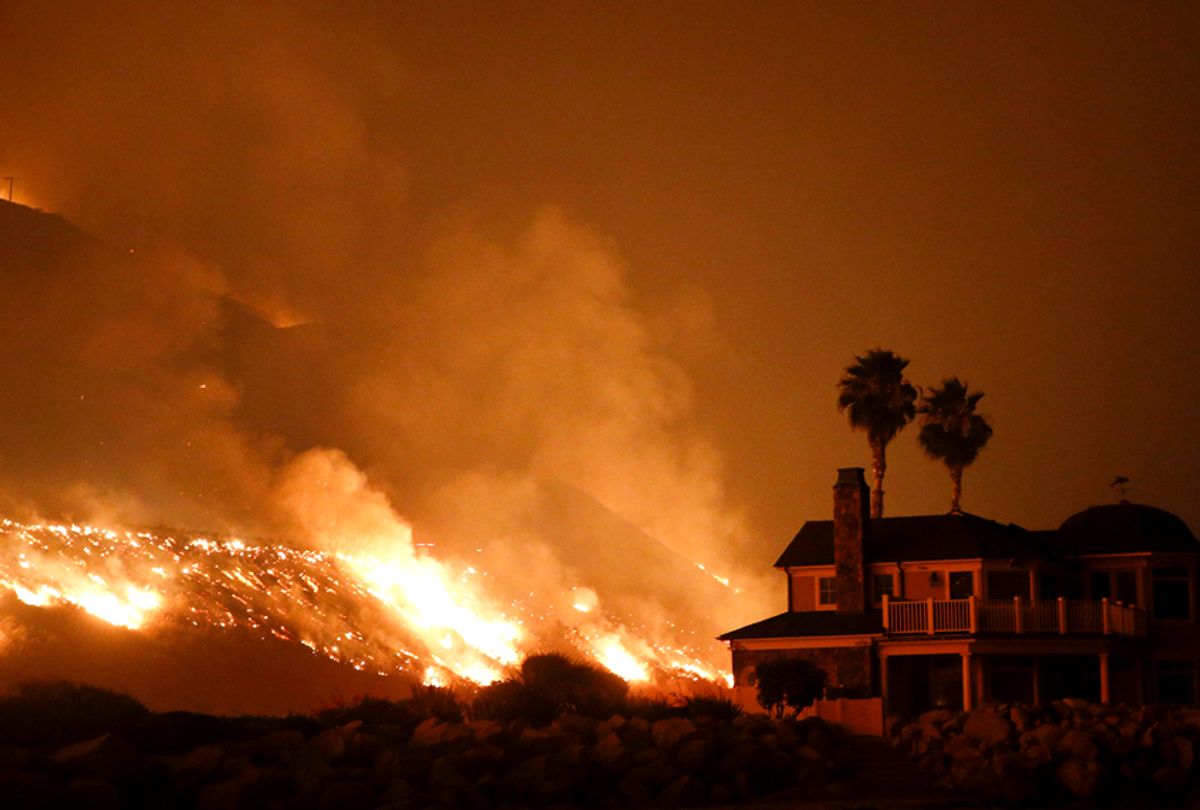The Los Angeles metropolitan area has been fighting off five wildfires as of Wednesday, forcing thousands to flee their homes and shutting down freeways throughout the Los Angeles area.
Huge Southern California wildfire moving rapidly, destroying all in its path. 1 person reported dead.
Certain however that governor Jerry Brown is more concerned this morning with how to let illegal immigrants off the hook for murder.#ThomasFire
— GRANT J. KIDNEY 🇺🇸 (@GrantJKidney) December 5, 2017
A major interstate — I-405 — was closed as a result of what is being referred to as the Skirball Fire. The closure was confirmed by Los Angeles Mayor Eric Garcetti. There are other fires burning simultaneously: The Thomas Fire has burned 65,000 acres; the Rye Fire burned 7,000 acres; and the Creek Fire torched 11,000 acres.
More than 7,700 homes in Ventura have been abandoned due to a mandatory evacuation order, according to the Los Angeles Times. One major concern is that winds could move the fires over to the cities of Santa Paula and Ventura, which are inhabited by roughly 140,000 people.
One factor exacerbating the California wildfires is climate change. Back when a series of wildfires ravaged northern California in October, Gov. Jerry Brown observed: "With a warming climate, dry weather and reducing moisture, these kinds of catastrophes have happened and will continue to happen and we have to be ready to mitigate, and it's going to cost a lot of money."
This assertion has been backed up by science, with recent research from the Lawrence Livermore National Laboratory revealing that California precipitation may drop by as much as 15 percentage points over the next two or three decades due to the decline in Arctic sea ice.
"As the climate warms, moisture and precipitation levels are changing, with wet areas becoming wetter and dry areas becoming drier," explained the Union of Concerned Scientists. "Higher spring and summer temperatures and earlier spring snow-melt typically cause soils to be drier for longer, increasing the likelihood of drought and a longer wildfire season, particularly in the western United States."
The Union of Concerned Scientists added, "These hot, dry conditions also increase the likelihood that, once wildfires are started by lightning strikes or human error, they will be more intense and long-burning."

Shares